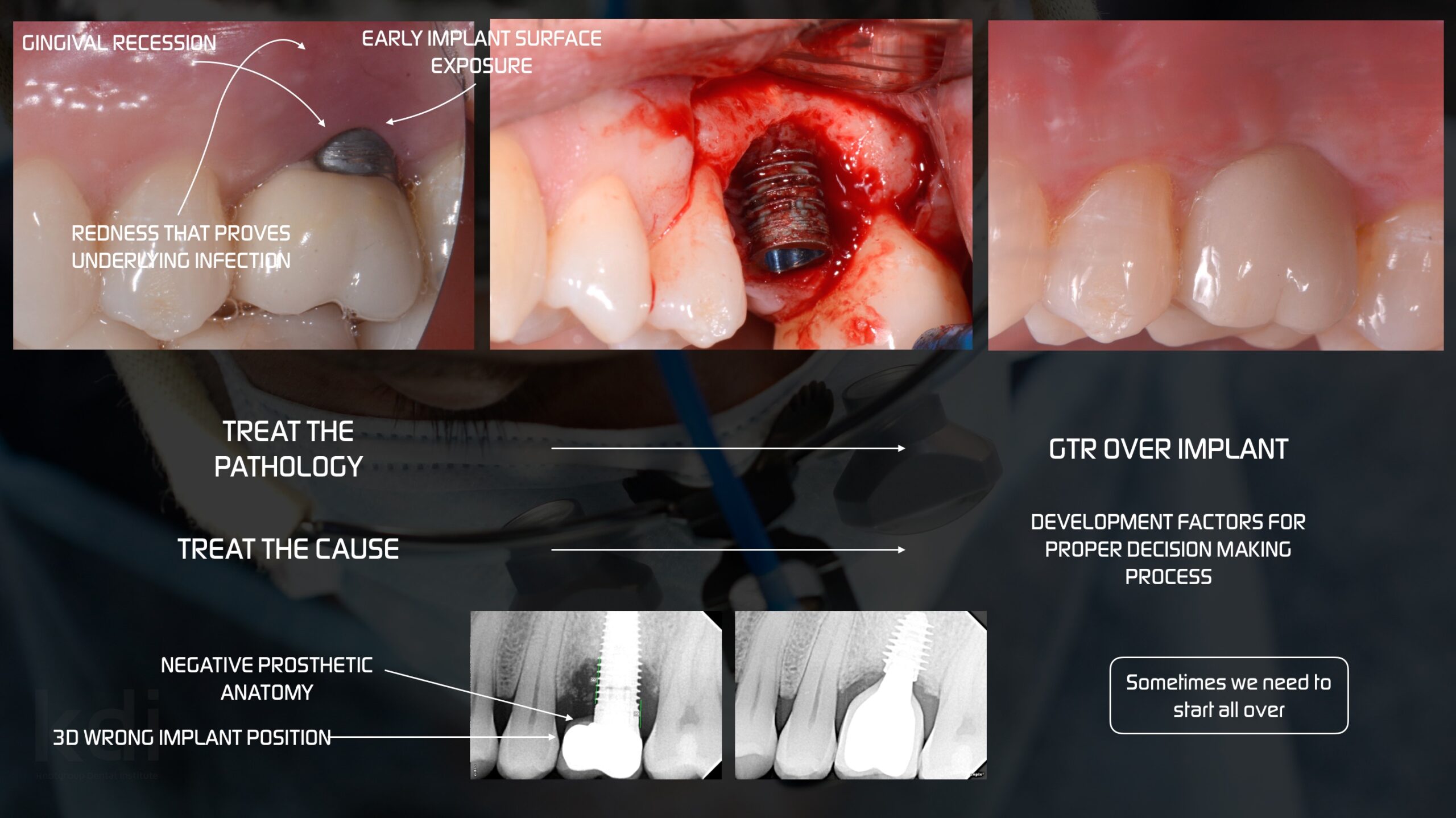Many articles & protocols regarding periimplantitis have been published mentioning the importance of picking the right treatment, hard and soft tissue management, long term prognosis depending on many factors.
The truth is that the Periimplantitis (PI) is the first cause of implant failure compared to fractures by over stress, deformations, wrong 3D implant placement, etc… This is the reason why if the PI is not properly diagnosed searching for the cause of the problem, we might make the same mistake again ignoring the circumstances that developed the disease.
The Periodontitis & Periimplantitis have in common the presence of similar Bacterias which are presented in a more complex organization when growing around implants (JCP 2012, Tatsuro Koyanagi & Cols). This proves the necessity of learning the biological limitations and resources that our implants have facing bacterial growth compared to our natural dentition assuming that the complexity and organization of the bacterias will be more aggressive and complex around our fixtures.
One of the most important decisions comes when deciding whether maintaining and regenerating the defect around the implant or removing the fixture to start all over.
Understanding and being aware of the future prognosis of the decision made is detrimental and starts by knowing the diagnosis or reason of development of PI, analyzing the defect in terms of regenerative potential and the quality of the tissues that surround the mentioned area. The same principles that we apply before any regenerative procedure.
The contaminated implant surface, in case of planning a GTR procedure around it, is very irregular and complex with high difficulty to achieve a complete decontamination. It will be our responsibility to study all the effective instruments, gadgets and chemicals available in the market to achieve this goal, a full decontamination of a microscopic irregular surface invaded by bacterias with high levels of potential growth.
Titanium Microbrushes from different brands are quite effective for surface decontamination but the question is if they are efficient.
LANAP therapy for root surface decontamination and new attachment has shown great results and for Implant Surface decontamination as well.
The contaminated implant surface must be completely exposed to the mechanical debridement and cleaning otherwise the bacterial niche with anaerobic bacterial potential growth will re conquer the surface, establish and invade the organic and grafted area with regenerative intention.
Those biomaterials used in our regenerative therapy should have a quick turn over to vital bone in order to create the mature bone needed and promote the new blood supply which shows a better response to bacterial threat than “dead particles” that might show a “better radiological feeling”.
For this reason, every time that we evaluate our implants in compromised situations, we should not believe in miracles, use scientific literature, trustful, efficient and consistent procedures as well as the use of balance risk/benefit with our patients being clear in our goals, intentions and limitations.
Watch the Masterclass “Integrated Implant Removal. Predictable Protocol and safe technique” where you will be able to learn all the strategies for early detection, evaluation and osseointegrated implant removal protocols for safe and minimally invasive procedures.

